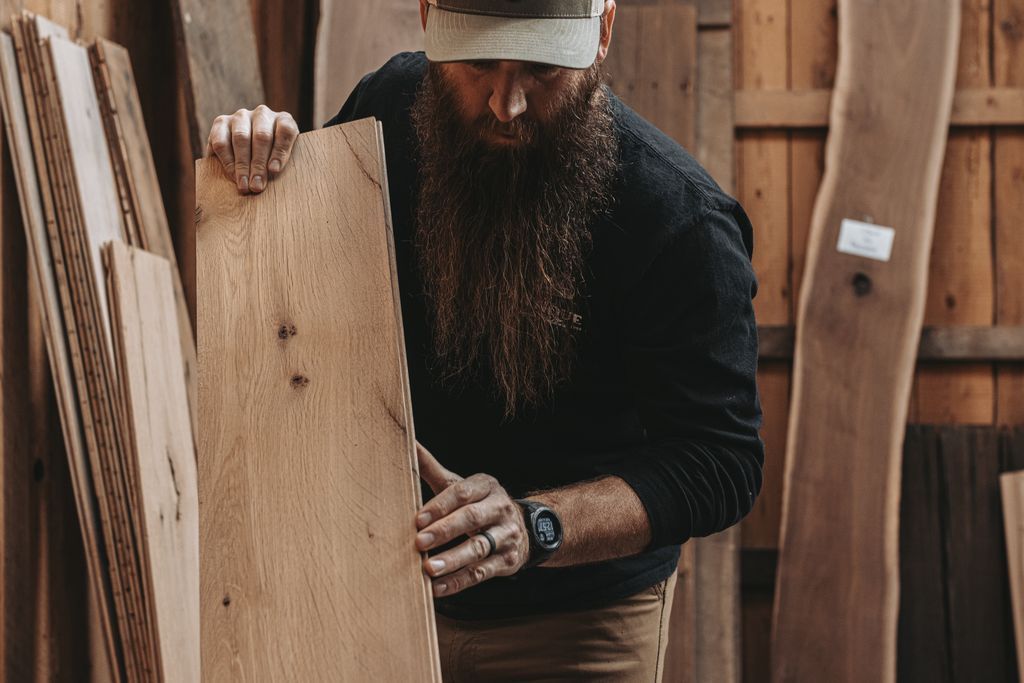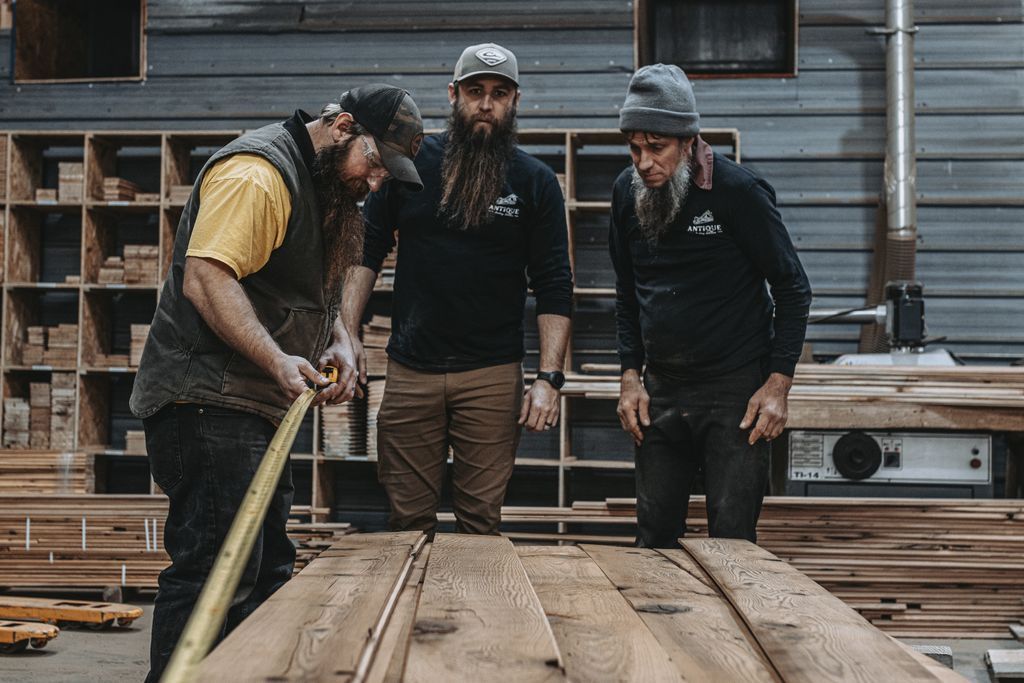How to Spot Authentic Heritage Reclaimed Wood Like a Pro
Expert Tips to Identify Genuine Heritage Reclaimed Wood

The market for reclaimed wood is full of options, but not all of them are what they seem. Knowing how to identify authentic heritage reclaimed wood can save you from wasting money and help you choose wood with the unique character and durability that make it special.
Whether you're planning a restoration project or creating a one-of-a-kind piece, our guide will help you spot the real deal.
What Makes Heritage Reclaimed Wood Unique?
Heritage reclaimed wood comes from structures built 75 to 300 years ago using slow-growth, old-growth timber. These trees grew in dense, untouched forests, resulting in tight grain patterns and strong, durable wood. This type of wood is hard to find nowadays and is prized for its unmatched quality.
What sets heritage wood apart is the story it tells. It shows marks from traditional woodworking tools, reflects unique aging patterns, and carries the patina of decades or even centuries. These details are impossible to fake and make each piece truly one of a kind.
Signs of Authentic Heritage Wood
Knowing what to look for can help you identify authentic heritage reclaimed wood. Here are some of the most reliable features to check:
1. Check the Growth Rings
The grain of the wood can reveal its true age. Old-growth timber has very tight, even growth rings, often 20 or more rings per inch. This tightness reflects the slow growth of ancient trees in dense forests. On the other hand, modern wood from fast-growing trees has wide, irregular rings.
You can use a magnifying glass to examine the end of a board. Authentic heritage wood often has such fine rings that the surface feels smooth, while modern wood will show more distinct differences between hard and soft grain layers.
2. Look for Traditional Tool Marks
Heritage wood often shows evidence of how it was worked. Marks from broad axes, hand saws, and adzes are common. These marks vary in depth and shape, unlike the precise, uniform cuts made by modern power tools.
You might also see signs of old construction techniques, like mortise and tenon joints or holes from wooden pegs. These features are hallmarks of pre-industrial woodworking methods, long before modern metal fasteners became standard.
3. Examine the Wood's Surface
Natural Patina
Patina is the surface color and texture that develops over time from exposure to air, sunlight, and wear. Authentic heritage wood has a varied patina, with darker colors in crevices and lighter areas where the surface was more exposed. By contrast, artificially aged wood often has uniform colors that don’t look natural.
Real Weathering Patterns
Heritage wood shows wear from years of exposure to the elements in its original structure. Rain, wind, and sun leave specific patterns of scarring and discoloration depending on the wood’s position. Artificial weathering can look random or inconsistent compared to the logic of natural aging.
4. Identify the Species and Region
Wood Specific to Its Time and Place
The type of wood used in historical structures often depended on local forests. For example, Eastern barns commonly used oak, chestnut, or pine. Western buildings often featured fir, redwood, or cedar. Knowing these regional trends can help confirm authenticity. If the wood type doesn’t match the claimed origin, it could indicate a fake.
Rare Finds Like Chestnut
American chestnut, which was wiped out by a blight in the early 1900s, is now almost exclusively found in heritage materials. Chestnut beams are a clear sign that the wood is genuine and dates back to at least the early 20th century.
5. Check for Historical Construction Details
Nails and Fasteners
Square nail holes are a key sign of authentic heritage wood. Round wire nails didn’t become common until the late 1800s, so square nail impressions suggest much older materials.
Old Finishes
The residue of milk paint, linseed oil, or similar finishes signals the wood’s age. Modern paints, like latex, are a red flag on wood claiming to be from historic times.
Use and Wear
Beams that supported heavy loads often show wear, compression, or slight bends. These signs of structural use can’t be reproduced in decorative wood or new materials posing as reclaimed timber.
Also read:
Sourcing Historic Barn Structures for Sustainable Builds

Warning Signs of Fake Heritage Wood
1. Too Perfect to Be True
Real heritage wood shows uneven wear, varying colors, and natural imperfections. If all the boards you’re looking at are too uniform, they may have been artificially aged or fabricated.
2. Modern Tool Marks
Circular saw marks or router profiles indicate modern processing, which suggests the wood isn’t as old as claimed.
3. Patchy Aging
Authentic heritage wood ages naturally and consistently across its surfaces. Random patches of aging or unnatural patterns may point to artificial treatments.
Expert Tips for Spotting Authentic Reclaimed Timber
Build Your Knowledge Base
Visit historic homes, museums, or documented installations of heritage wood. The more you observe authentic materials, the easier it will be to identify the real thing.
Ask Questions
Don’t hesitate to quiz suppliers about the wood’s origin, species, and how it was processed. Reputable sellers should have clear answers, backed by documentation, about their wood’s history.
Compare Samples
If possible, study several examples side by side. Observing differences in grain, patina, and wear can refine your ability to spot authentic reclaimed timber.
Why It Matters to Get It Right
Investing in authentic heritage wood isn’t just about quality; it’s also about preserving history. Properly sourced reclaimed timber adds timeless character to any project while offering sustainable building choices. But with so many low-grade or fake materials on the market, understanding what to look for ensures your investment pays off in the long run.
At Bay & Bent, we’ve spent years studying historic barns and other structures to authenticate high-quality reclaimed wood. We go beyond surface appearances, digging into a piece’s grain, tool marks, and construction details to uncover its history. To learn more about how we approach reclaimed timber, visitBay & Bent.









